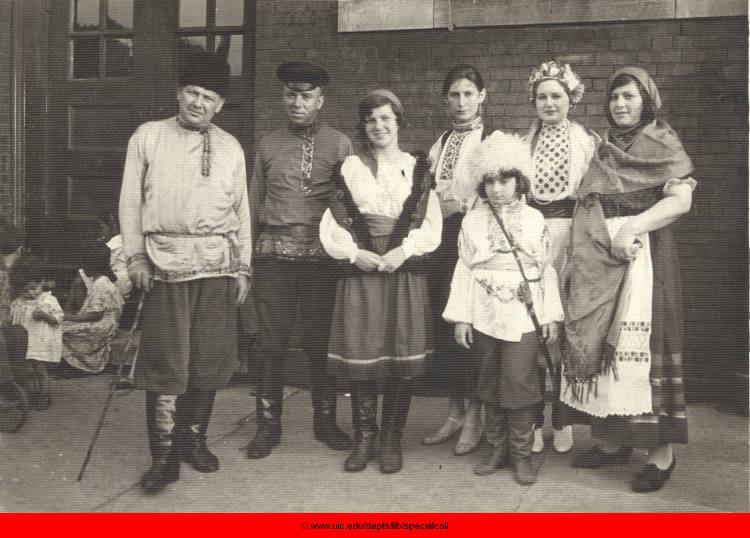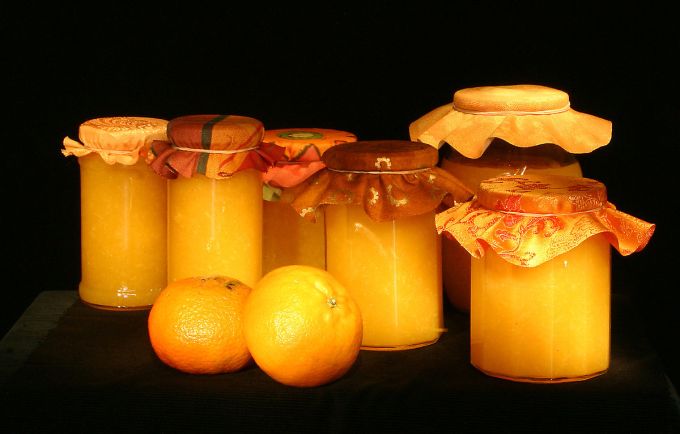
In 1961, a poem by Congregationalist minister Eunice Belle Trumbo was published in The Pioneer Cook Book, which doubled as the November curriculum of the Daughters of Utah Pioneers (DUP). A lineage association modeled on the Daughters of the American Revolution, the DUP remembers settler colonists who traveled to or through Utah Territory between 1847 and 1869, before the transcontinental railroad was completed. The November 1961 lesson would have reached many of the seventeen- to eighteen-thousand women then organized into 111 DUP “companies” and 900 “camps” in nineteen states.[1]
The poem’s author had no connections to Utah. Born in Allen County, Ohio, in 1876, Eunice Trumbo was associated with Firman House, a Congregational settlement school supported by the Chicago Missionary Society. Some forty-five years before her poem was featured in The Pioneer Cook Book, Trumbo attended a meeting of those concerned with the “Education and the Naturalization of Adult Foreigners in Chicago”; at the start of the next year, in 1917, her article “The Immigrant Child at Firman House” described how Americanization was accomplished through gymnastics, sewing, storytelling, the Abraham Lincoln Club, and Sunday School.[2]

However, the Trumbo poem sent out for study by the DUP sought to teach history and values not by pointing to illustrious national leaders and dominant cultural touchstones, but by chronicling the daily labor of female forebears. “When Grandma Was Ready for Winter” catalogs the range of skills needed to produce, prepare, and preserve household necessities:

When the last green tomato was pickled,
And the last blushing peach had been peeled;
When the last luscious pears had been quartered,
And the last can of plums had been sealed;
When the last yellow quince had been honeyed,
And the last drop of chili sauce jugged;
When the last stalk of cane had been sorghumed,
And the last barrel of vinegar plugged;
When the grape juice was all corked and bottled,
Corn made into salad, or dried;
When the beets and the apples were buried,
And the side-meat and sausages fried;
When the catsup was made and the sauerkraut,
and potatoes were stored in the bin;
When the peppers were stuffed full of cabbage,
And the pumpkins were all carried in;
When the flowers seeds [sic] were gathered and packaged,
And the house-plants were potted and in;
When the fruit cakes were baked for Thanksgiving,
And the mincemeat was canned up in tin,
The celery blanched and nuts gathered,
And the beans had been shelled out and hulled;
Sweet potatoes dry-kilned in the oven,
And the onions were pulled up and culled;
When the honey had all been extracted,
Comb melted and beeswax in molds;
When the jellies were all glassed and labeled,
And the horehound juice syruped for colds;
When the tallow was made into candles,
And the ashes were leached into lye;
When the rushes were bundled for scouring,
And the walnut hulls gathered for dye;
When the cheeses were unhooped and ripened,
Beef corned in the brine to be dried;
Hams and shoulders well browned in the smoke-house,
Lard rendered from cracklings and tried;
When the popcorn was tied to the rafters,
And the wood was piled high in the shed;
When the feathers from goose and from gander
Were picked for the warm feather bed;
Women folks were most ready for winter,
To rest as they knitted and sewed,
Spun flax, carded wool, and pieced quilt blocks;
Is it strange grandma’s shoulders are bowed?
The poem references a staggering range of objects, labor, and knowledge. Specialized containers (cans, jugs, barrels, bottles, jelly glasses) are linked to specific preservation processes, including pickling, sealing, corking, soldering [“canning in tin”], drying, burying, brining, smoking, and rendering. Then there is the work of growing and harvesting foods, as well as the preparatory labor of making molasses and sauces, stuffing bell peppers with vegetables and spices before pickling them as “mangoes,” fermenting cabbage for sauerkraut, frying up meat before potting it in its own fat. (Trumbo uses at least forty-three different verbs to describe food processing, in addition to the more generic “made.”) With its honeyed quinces and ripe cheeses, hot cracklings and cured sweet potatoes, this tribute to “women folks” sounds both delicious and exhausting.

The poem has also been popular. Several years before being included as part of the official Daughters of Utah Pioneers curriculum, Trumbo’s paean to foresight and self-sufficiency was already circulating among the organization’s membership. During a November 1953 chapter meeting of Camp Fort Utah (in the university town of Provo), Mellie Cook read the poem aloud as part of a program at the home of La Prele Searl that included a performance of “Scottish Highland Fling” and “Ghosts” on the piano. Other clubwomen were circulating it, too. In 1954, Willowdale Grange of Fairdale, Illinois, hosted an “At Home” night that brought together seven chapters of The National Grange of the Order of Patrons of Husbandry. During an eventful meeting that ended with the untimely though natural death of one participant, members of the co-ed agricultural fraternity heard a recitation of “When Grandma Was Ready for Winter.”[3]
Trumbo’s printed litany stands in marked contrast to many (or missing) accounts of women’s labor—a fact that perhaps explains its circulation among rural or socially conservative women in the 1950s and 1960s, at a time when unpaid domestic work was becoming more publicly visible and its value increasingly contested. But the poem represents a counter-narrative in another sense, as well. Its high specificity and recognition of the tolls such labor extracted keeps it from being simply celebratory.
“When Grandma Was Ready for Winter” echoes a 1912 piece Trumbo published in Life and Labor, one that similarly emphasized the breadth and trials of women’s work. Originally written for Ohio Educational Monthly, “The Teacher” surveyed the physical, emotional, and intellectual labor that primary school instructors undertook for little reward: each stanza ends with the refrain “and all for forty dollars.” (That fall, editors of Railway Carmen’s Journal reprinted the poem, but added a playful verse that advised these long-suffering teachers to unionize for better pay.)[4]
In fact, Trumbo considered herself a Progressive. By 1914 she was a suffragist, a girls’ club organizer, member of numerous women’s clubs, and had served two years as secretary for the Farmers’ Institute, a precursor to USDA Cooperative Extension organizations.[5]
“When Grandma was Ready for Winter” still circulates today, though perhaps primarily as a touchstone for nostalgia. A number of grammatical changes and spelling errors in one 2012 online posting suggest that some knowledge about these foods and processes has been lost. The participles “sorghumed” and “dry-kilned” are gone, replaced by “had become sorghum” and “dried in the oven”; the quartered pear has become an unlikely quartered pea; the “smokehouse,” “smoke-hours”; the noun “cracklings” (bits of crispy meat and skin left after rendering lard) is now the adjective “crackling,” and in this version cheeses have been “unhopped” rather than “unhooped” from the molds that give them shape. [6]
Nevertheless, Trumbo’s poem reminds us to pay attention to varied preservation knowledges, and it acknowledges that multiple strategies coexisted in everyday food production more than a century after Nicolas Appert published Le livre de tous les ménages ou l’art de conserver, pendant plusieurs années, toutes les substances animales et végétales (The book for all households or the art of preserving, for several years, all animal and vegetal substances, 1810).

Appert’s book described a method very similar to today’s waterbath canning, one that would potentially allow every type of food to be preserved in the same “nearly fresh” way. This uniform process was quickly adapted by commercial food producers, formed the basis for industrial canning, and dominates histories of food preservation.
“When Grandma Was Ready for Winter” thus also offers a welcome complement to accounts that concentrate on food’s mass production. Historically, home-based foodways have been contextually variable, existing largely in a realm of situated demonstration and practice. As a result, they are perhaps less broadly accessible; certainly, they are narratively unwieldy. Yet like an efficient storehouse, Trumbo’s poem packs a wealth of skill, strategy, and effort into just 44 lines.
Works cited
[1] Eunice B. Trumbo, “When Grandma Was Ready For Winter,” in The Pioneer Cook Book, Lessons for November, compiled by Kate B. Carter (Salt Lake City, UT: Daughters of Utah Pioneers, 1961), 127; email from Constance Huntsman, International Society Daughters of Utah Pioneers Historian, September 30, 2019.
[2] “History,” Firman Community Services (2019), http://www.firmancs.org/aboutus_history.html; “Cooperating Civic Bodies Confer over Problem of Teaching English to Adult Foreigners and Making Citizens,” Chicago Commerce 12 (October 6, 1916), 9; Eunice B. Trumbo, “The Immigrant Child at Firman House,” The American Missionary 71 (Jan. 1917), 540-42.
[3] The Sunday Herald, Provo, UT (November 15, 1953), 18; The Daily Chronicle, De Kalb, Illinois, (October 16, 1954), 5.
[4] Eunice B. Trumbo, “The Teacher,” Life and Labor 2, no. 6 (June 1912), 187; Railway Carmen’s Journal 17 (September 1912), 558.
[5] Women’s Who’s Who of America: A Biographical Dictionary of Contemporary Women of the United States and Canada, 1914-1915, ed. John William Leonard (New York: The American Commonwealth Co., 1914), 825; Jeffrey W. Moss and Cynthia B. Lass, “A History of Farmers’ Institutes,” Agricultural History 62, no. 2 (1988): 150–63.
[6] For example, in November 2012, tricia47 posted the poem on the UK arm of ancestry.com, noting that she’d downloaded it from the internet in 1999.









 If Smucker’s has moved from the virtuality of a fabric cap to virtual fabric itself (reproduced two-dimensionally on a metal lid),
If Smucker’s has moved from the virtuality of a fabric cap to virtual fabric itself (reproduced two-dimensionally on a metal lid), 

